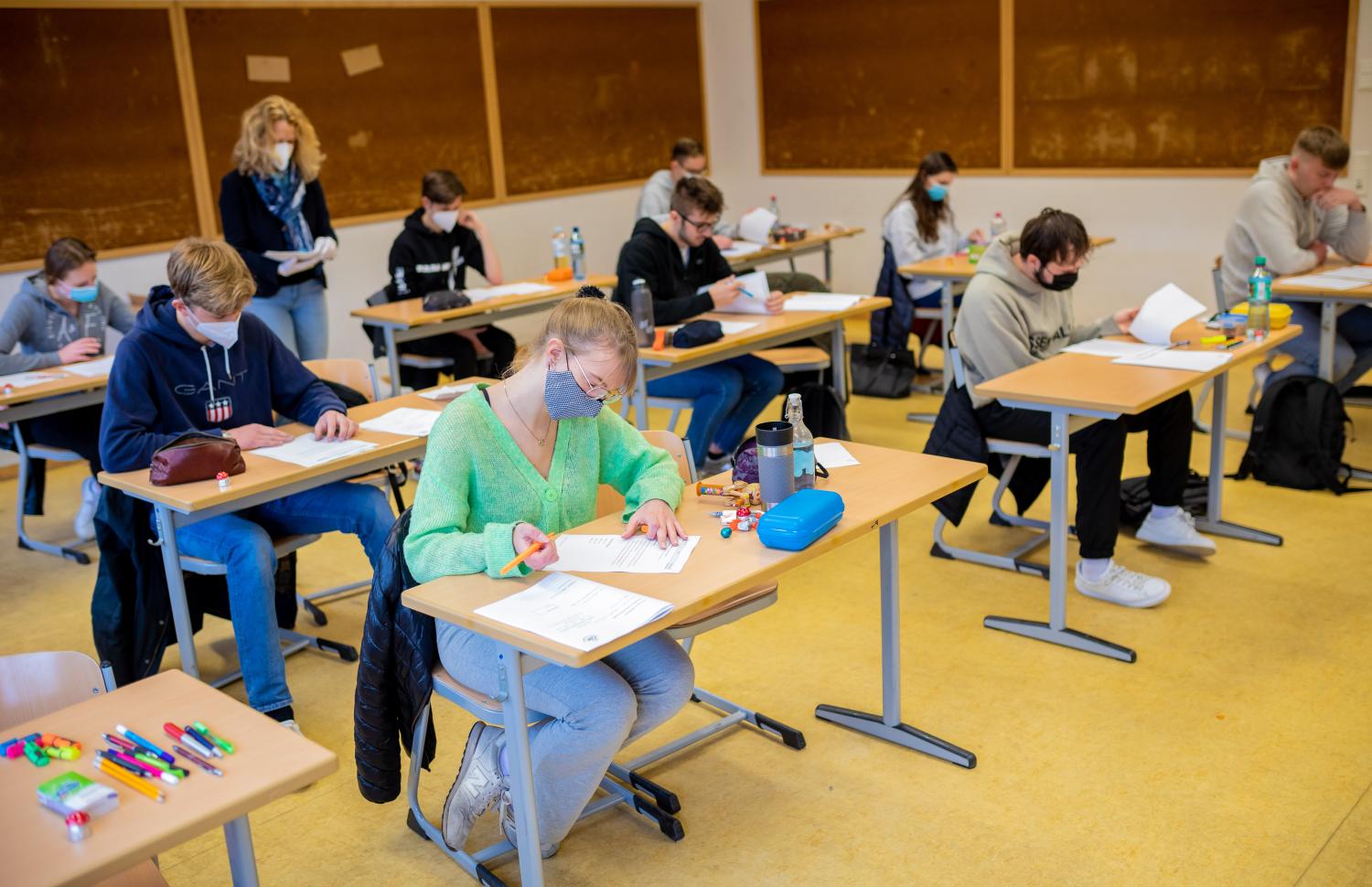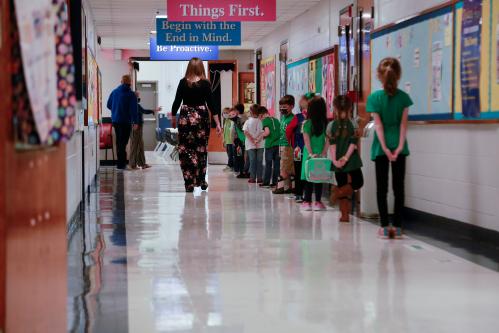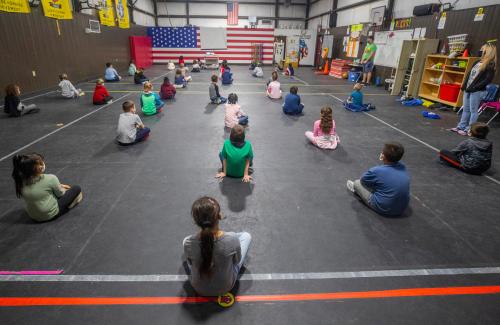As the one-year anniversary of campus closures due to COVID-19 passed last March, nearly half of America’s children were attending schools operating remotely or open only on a hybrid basis. In California, more than 70% of students were attending schools that were fully remote.
But spring brings new hope. Amid steps to ensure safe health practices and the acceleration of vaccinations, the rates of transmission have decreased from earlier peaks in the winter and students are beginning to return to school.
While the return of students to campus is something to celebrate, it is essential to note that the pandemic and related prolonged school disruptions have and will continue to have a profound impact on the lives and learning of students.
Due to inequitable access to health care, income inequality, and disproportionate employment in high-risk, “essential” jobs, low-income, Black, Latino, and Native American communities have borne the brunt of the pandemic, with dire health and economic impacts that hinder their children’s educational opportunities and learning. It is difficult for children to learn if they are sick or hungry, or if they have family members who are sick or even dying. Some students have found themselves without a safe, stable place to live, lacking basic necessities, and disconnected from needed services and supports when schools—a primary avenue for public service delivery—closed for months on end.
Making learning in the pandemic even more challenging, many of these students have lacked reliable access to the internet and computers. And working parents have often found themselves unable to stay at home with their children, sometimes leaving them without needed supervision and support. This has been especially difficult for children in the early grades who may not be able to independently follow directions or navigate online assignments, as well as for some students in upper grades, who may need support to stay on task and away from online distractions such as social media. These instructional support issues are only compounded for students learning English or those with special needs.
Research by my organization, Policy Analysis for California Education (PACE), has documented how student learning has suffered during the pandemic, leading to growing equity gaps. One study showed significant learning lag in both English language arts and math, with students in grades 4-6 the most impacted. As of fall 2020, students in these grades were between 5 and 25% behind where they would be in a typical year. These averages mask serious differences between student groups. In most grades, low-income students are substantially further behind than higher-income students. And in some grades, lower-income students are falling behind while higher-income students’ learning actually accelerated. Further, students learning English demonstrate substantially more learning lag than comparison students in nearly every grade in English language arts and in early grades for math. For example, on the MAP English language arts assessment, grade 5 students learning English are roughly 30% behind, while native English-speaking students are only 10% behind.
Another study, with colleagues at Stanford, examining oral reading fluency in grades 1-3 found that in the spring of 2020, the development of reading fluency largely stopped. Students’ reading fluency was again growing at normal rates by the fall, but the return to nearly average gains was not sufficient to recoup spring’s losses. No growth in the spring and summer meant that in fall 2020, students in 2nd and 3rd grade had fallen about a third of a year behind where they should be in terms of expected reading development. These findings also show that students in historically low-performing districts are falling behind at a faster rate.
In our studies and others like them, many students are missing from schools and assessments. We suspect some of the students that have missing data in our analyses may be disengaged or missing from school altogether. K-12 public school enrollment in California has dropped by a record 160,000 students (a 3% decline overall), a change about five times greater than the state’s annual rate of enrollment decline in recent years. It is likely that students missing from our analyses have experienced even larger learning losses than those students observed, meaning that the equity impact of the pandemic is almost certainly larger than we estimate.
As we move forward, we need to be particularly concerned for our youngest and oldest students. The biggest declines in enrollment are in the earliest grades, and preschool enrollment is down as well. Additionally, distance learning has been hardest for our youngest students, meaning that a large proportion of students are likely to start kindergarten and 1st grade very far behind. If these students in the early grades don’t develop the basic skills they need, it may be difficult for them to access future learning.
Additionally, older students have experienced more challenges around mental health, isolation, and disengagement, and with greater consequences. Across the state of California, there are troubling signs that high school students are not engaging with distance learning. In Sacramento City Unified School District, 10 times more students are significantly disengaged compared to last year. And in Los Angeles Unified, the number of Ds and Fs in grades 9-12 increased by 8.7 percentage points in the fall compared to the same time period last year, with greater increases among Black (23.2%) and Latino (24.9%) students. If educators don’t work hard to get these students back on track, graduation rates will decline and inequities in college access and success will increase.
| Recommendations for a restorative restart |
| 1. Center relationships. • Connect 1:1 with every family and every student to build partnerships, trust, and communication between families and educators. • Create dedicated time and space for relationship-building and re-engagement. • Implement positive and restorative discipline practices. |
| 2. Address whole-child needs. • Conduct regular student wellness screenings. • Assess student learning and review data on attendance, engagement, grades, and stakeholder perceptions about school conditions and climate. • Create an action plan to meet the individualized whole-child needs of every student, by addressing student trauma, implementing community schools strategies, and better aligning services within schools and districts to meet students’ diverse needs. |
| 3. Strengthen staffing & partnerships. • Pair students with high-dosage tutoring and mentoring. • Provide mental health supports. • Offer expanded learning opportunities, including those in the summer and in out-of-school time, that are hands-on, fun and engaging, student-centered, and complementary to classroom learning. • Staff up to support student re-engagement by hiring new staff, liaisons, and community partners. |
| 4. Make teaching & learning relevant & rigorous. • Advance racial equity and cultural responsiveness through instructional materials and books. • Advance racial equity in teaching through providing all educators with professional development opportunities and strategies and tools. • Offer students choice and voice in their learning. • Focus on priority standards and lessons to accelerate rather than remediate learning. |
| 5. Empower teams to rebuild & reimagine systems. • Create restorative restart and transformation teams so that this work is systematized and continues long term. • Establish a districtwide vision and framework for transformational and systemic change. |
Our educational system in the United States was already highly inequitable and plagued by opportunity gaps in learning that have widened during the pandemic. Although we may see the light at the end of the tunnel on the coronavirus crisis, the educational equity crisis is just beginning.
This unprecedented challenge requires unprecedented action. The good news is that new federal investments offer needed resources. California K-12 schools have received or are slated to receive roughly $28.6 billion in federal funds between spring 2020 and spring 2021 to address pandemic response and learning loss. About $129 billion in COVID-19 relief funds will go to K-12 schools nationally.
This money must be used to catalyze a transformation in our education systems. While many are eager for a return to normal, the old “normal” was under-serving our nation’s most vulnerable children and youth. As we respond to this public health and education emergency, we must build toward an education system that places equity at the center so that all students—and especially those most impacted by the pandemic and systemic racism—have the support and opportunities they need to achieve their potential.
We can begin by nurturing student social and emotional well-being to support academic progress. But we must also go further to reimagine the very systems in which students learn. By redesigning schools to be restorative places—places where students feel safe, known, supported, and fully engaged in learning—we can lay the groundwork for long-term and systemic transformation. Such a system should prioritize relationships between families, students, and educators, address whole-child needs, strengthen staffing and partnerships between schools and community partners, and empower teams to rebuild and reimagine systems. This transformation must happen in every school and district in the country, and especially in those serving low-income students and students of color who have for too long been ignored.
The new one-time federal funding for these efforts is critical, but local, state, and federal leaders should be planning now to improve and expand overall school funding in a way that provides sufficient funding for education systems and ensures the equitable distribution of funding to those schools and districts serving students with the highest levels of need. The old adage goes, “Never let a good crisis go to waste.” The COVID-19 pandemic has laid bare the inequities in our society and in our schools, but the disruption in the status quo presents an opportunity to reimagine and rebuild our educational systems to better serve America’s students.
The Brookings Institution is committed to quality, independence, and impact.
We are supported by a diverse array of funders. In line with our values and policies, each Brookings publication represents the sole views of its author(s).







